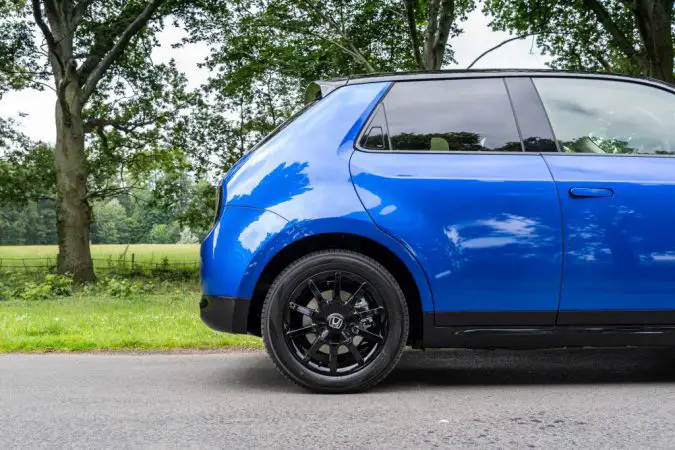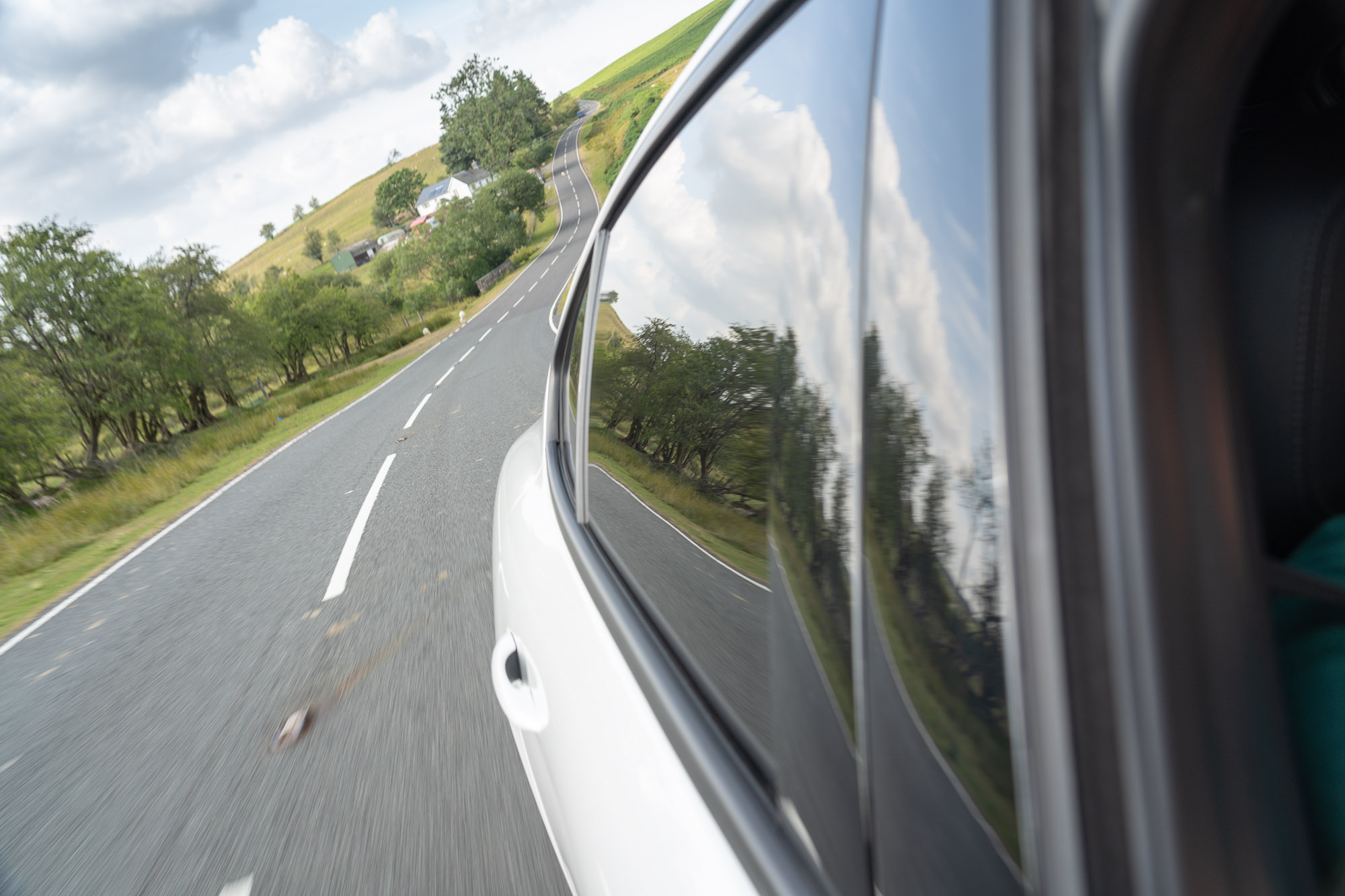Are your car windows splattered with debris, dust, bug guts, and droppings from the passerby pigeons? Can you even look at the road through them anymore? This is the day when you clean your car windows like your life depended on it – because it does.
Many people tend to skip this step of their regular cleaning routine and to them, we only have one thing to say: that’s disgusting! A key part of keeping any vehicle clean is making sure the windshield is squeaky clean. If not squeaky clean, it has to be clean enough to see through. Grimy smears and fingerprints on your windshield are embarrassing and unattractive, not to mention dangerous.
Being able to see the road, behind you, and to the side are somewhat essential to stay safe on the road, right? Dusty or smudged glass also affects the vehicle’s interior heating and cooling.
Why would you not clean the windows? It is quite possibly one of the easiest stages of a car cleanup. Check out these handy tips and tricks on how to clean car windows, ensuring a speckless job always.
- Cleaning Safety
- Never Use Ammonia
- Microfiber Towel or Paper Towels?
- Supplies to Buy
- Cleaning Agent
- Hard Water Spots
- Tinted Windows
- Cleaning Without Leaving Streaks
- Cleaning Windshield Wipers
- DIY Homemade Glass Cleaner
How To Clean Car Windows: Car Window Cleaning Safety
Cleaning a vehicle can be messy and dangerous, so there are precautions you must take to make sure you don’t lose a finger, get maimed, have your clothes ruined, or die. A pair of nitrile gloves will go a long way in keeping your hands safe from the many harmful chemicals found in cleaning agents.
Covering your nose and mouth isn’t necessary but it can protect your senses from the overwhelming smell from those solutions.
Why You Should Never Use Ammonia to Clean Car Windows
Window cleaning sprays or liquids often contain ammonia, such as Windex. Ammonia as a cleaning agent is cheap and readily available, and it also breaks through grease buildups and oil smudges super fast. This is why many brands prefer using this chemical in their cleaning agents. But it isn’t the safest chemical you can put on your car.
Ammonia can harden or dry out the rubber or plastic seals around the windshields on your car, ultimately loosening or even detaching the glass from the slot. In addition, ammonia is harmful to the window tint. Tint peels off, occasionally getting ruined completely.

Ammonia is also infamous for leaving streaks on windows – one of the most annoying things you can face after cleaning glass. Streaks decrease the visibility of the windshield. Not only does ammonia irritate the skin, but it also can cause burns.
In a closed environment, ammonia fumes can be lethal – known to cause respiratory tract irritation. Mixed with bleach, these fumes get more toxic. Never combine ammonia-based cleaning agents with similar cleaning products.
If you must buy concentrated ammonia formulas, make sure you use distilled water to dilute it. You can search your local automotive or hardware store for cleaners formulated especially for cars.
How To Clean Car Windows: Microfiber Towels Or Paper Towels?
Back in the day, car owners liked using newspapers to clean car windows, and paper towels were also popular for the same. However, in the modern-day car detailing industry, there is so much more you can explore.
Newspapers are affordable and easily accessible but disintegrate fast once in contact with water. You get fiber residues along the edges and in the corners of car windows. For the same reason, we don’t like using paper towels. Also, paper towels and newspapers are not that effective in cleaning oil off glass surfaces.
Scratch-resistant microfiber towels are the best option. These not-so-ordinary cloth towels absorb and dry faster. They are also highly effective in capturing and removing dirt due to their fiber layout. Most importantly, microfiber towels are soft, thanks to which they leave no scratches or residue on the glass.
When selecting a microfiber towel, make sure it has a tight weave which will give it an increased scrubbing ability. Only dip one side of the towel in water for the cleaning process. The dry side will be used to wipe the glass once you are done to prevent streaks. Generally, top-quality microfiber cloth does not leave streaks. However, keep in mind that this can only be used on the outside of the windows.
Window Cleaning Supplies To Buy
Before you learn how to clean car windows, you must be familiar with the supplies you need. It is best to keep a set of these supplies in your garage so you remember to clean your windows frequently.
- Any good window cleaner
- Bucket (when using concentrated cleaner)
- Distilled water (when using concentrated cleaner)
- Sponge (optional)
How To Clean Car Windows: The Cleaning Agent Way
Before everything, remember to save the windows till the very end to save yourself from doing extra work. If not, you will notice smudges and grimes on the windows by the end of the cleaning process. Once you get too engrossed in ridding your beloved vehicle of the dirt and debris, it is easy to forget that the windows were just cleaned and should not be touched with dirty, soapy hands.
Step 1
Bring your vehicle into the shade. By their very nature, car bodies take in heat rather fast. When your car sits in the sun for too long, it feels hot to the touch. Park the car in a shaded area and wait for the exterior to cool down a little.
If the car is steaming hot the water or cleaner will evaporate too quickly. Thus, you will be using too much product and needing excessive elbow grease.
Step 2
Clean the rear and front windows. These windows are the hardest to clean due to their angle and size. Spray a good amount of the cleaner onto the window, applying from the bucket using a sponge. Use a clean microfiber towel to wipe the rear window and front windshield clean.
Tip: When you clean in various directions, it is easier to note missed spots or smudges. For instance, you can try wiping up and down the outside of the car, and left to right for the inside.
Step 3
Pay special attention to the rigid bug splatter on the windows (and figure out how to get bugs off your car). You might have to take drastic measures if the stains do not remove easily. We have a special section specifically on how to clean car windows painted with insect remains. Keep on reading for that.
Step 4
Roll down the side windows. Drivers often tend to miss this spot – the top part of the window that slides inside the rubber seal slot. To prevent this, roll down the windows a little and use the microfiber towel to wipe the area clean. If this part of the window is particularly dirty, you may have to spray a little more cleaner for an extra-strong cleaning.
Step 5
Time to wipe down the side windows! Follow a top to bottom movement. We recommend running the towel along the outer edges of the window to remove any grease or dirt buildup occurring along the window seams. After cleaning the corners and edges, wet (or re-wet) the side window’s main surface and wipe in the opposite direction.
For instance, if you follow an up and down motion for the exterior windows, do a side to side motion for the interior windows. This will help you take note of any areas you may have missed. Cleaning windows from top-down helps prevent any unwanted drips from wasting your hard work. While cleaning the side windows, spray some cleaner onto the side mirror and give them a good wiping.
Step 6
Your wiper blades need to be cleaned last. Apply a little bit of cleaner on them to break down any buildup and then wipe the wipers to dry them. Any sort of debris buildup on wiper blades poses a threat to safe driving. We will speak on this topic once more as the article progresses.
How To Clean Car Windows: Hard Water Spots
After aggressively cleaning the windows and going limp in one arm, you notice water spots around the glass (which means, you need to figure out how to get water spots off car). Alongside ruining your mood, it will also ruin the polished and gleaming look you wanted. The worst part is that these hard ward spots are difficult to remove even with regular glass cleaners. We recommend using high-quality glass polish products for a better job.

Step 1
Recognize hard water buildup. Certain minerals will make sports appear, like calcium, magnesium, and lime. If you see stubborn crust buildup on the car windows that refuse to come off, that can be a hard water problem. As hard water spots can etch the window glass if left on for too long, it is important to clean them as soon as possible.
Step 2
Assemble the supplies. Fortunately, hard water spots can easily be removed with a combination of household supplies. In particular, vinegar is a great cleaner (more on that later). To make the hard water cleaner, get:
- Spray bottle or a bucket
- Distilled water
- White vinegar
- Rubbing alcohol
Step 3
In a bucket, mix all the ingredients listed above. For every cup of warm water and rubbing, alcohol added, you need to add a tablespoon of white vinegar. Based on the seriousness of the hard water problem, you may have to make a little or a whole lot of this DIY hard water cleaner.
Step 4
When necessary, spot clean. Your car should be reasonably clean at this point, with very few stubborn hard water spots littered over the windows. Make sure your vehicle is under some sort of shade to prevent the mixture from evaporating too quickly. Spray the stains with the prepared cleaner and wipe it dry with a microfiber towel until you see the buildup disappearing.
Step 5
Use high-quality glass polish to restore the condition of the windows. If they still appear a bit cloudy, apply more polish and buff till you achieve the required glossiness.
Reminder: The polish shouldn’t be oily. You should be able to pick up multi-surface finish restorers at any local automobile or hardware store. To polish, use a piece of soft cotton cloth.
How To Clean Car Windows: Cleaning Dead Bugs, Bird Droppings, And Grime From Car Windows
You ever seen a car that has been neglected so badly that it is covered in bird poop and grime? The scene is mortifying, to say the least. Some people try to remove the gunk by scraping it off with sharp objects whereas others would rather use a towel to wipe it off. None of them is the most efficient way to do it.
Bird poop and dead bug guts are filled with acid, and you don’t want to smear acid all over the windows of your car. Moreover, bird droppings can contain trace amounts of rock since most birds do stuff small rocks in their gizzards – it helps them chew food. Exoskeletons of some bugs harden up after they have been left to dry on the windshields.
Thus, when you wipe dead bugs or bird poop off your car window, you may end up scratching some of the surface layer paint off. This is why you need a good cleaning product. Spray a bit onto the dead bugs or bird droppings and let it sit for a few minutes. Take your trusty microfiber towel and gently wipe the debris off the window.
How To Clean Tinted Car Windows?
Sensitive by nature, car window tints are easily damaged by ammonia or alcohol. It is best to steer clear of products containing these two agents if you are dealing with tinted car windows.
When wiping the surface of the tint, avoid the window edges to stop the cleaning solution from seeping under the tint and creating bubbles. In case you do see bubbles, a heat gun can be used to push the air out.
The good ol’ credit card trick could work for you – if done right. For that, wrap a thin cloth around a credit card and press the edges onto the tint, trapping the air and moisture to move to the edges of the window.
Cleaning a tinted window is somewhat similar to cleaning a regular window. For starters, apply the cleaning solution onto the window and spread it evenly onto the surface using one side of the microfiber towel. After that, flip the towel over and wipe the glass surface once again following the box wiping technique.
How To Clean Car Windows: Cleaning Without Leaving Streaks
Why are streaks more irritating than dirty, greasy car windows? Because they remind you of an inadequate cleaning effort on your part. The main culprit behind this is leaving the cleaning solution/product on for too long. When the cleaner dries too quickly, it leaves behind a streaky residue on the glass surface. Luckily, this can be remedied by using a cleaning product that has a longer drying time.
Cleaning your windows in an enclosed place or a shady area can also help decrease the evaporation rate of cleaners. Soft reminder: Never use ammonia-based products in enclosed areas.

Towels can also lead to streaking. If you use a single towel on several windows, it will get saturated with gunk and dirt. After cleaning one window, the towel itself needs a good rinse. Otherwise, you are simply transferring the dirt from one car window to another. The result? More streaking!
Towels that don’t collect grime or dirt and are quick to absorb the cleaner, e.g. paper towels and polyester, can cause streaks as well. You have to give more effort when cleaning with those as you will spend a considerable time rubbing the glass. Cotton towels, though rather absorbent and better collectors of grime, tend to shed. The last thing you want is a streak of lint across the glass. This is why we keep mentioning the importance of using microfiber towels.
How To Clean Windshield Wipers
Caked with grime, dirt, and debris, dirty windshield wipers also mess with the integrity of your windshield. You need the right cleaning product, rubbing alcohol, and microfiber towels to clean them.
Pour or spray the cleaning agent onto the towel and wipe the blades carefully. Pick an end of the blade with the towel and in one swift motion, go from one end to the other. Most likely you will notice dirt coming off the windshield wiper. Repeat the wiping motion until barely any dirt accumulates on the towel.
Do the same process on the other wiper blade. Take the rubbing alcohol and apply a little onto another towel before wiping the blades again, continuing the end-to-end motion. This will take off any residual grime. Conclude the process by applying/spraying the cleaning solution onto other sections of the wipers, like the hinged zones. Buff thoroughly.
Alternative To Store-Bought Cleaning Solutions: DIY Homemade Glass Cleaner
Alcohol is a common chemical found in store-bought windshield washer cleaners. It can be found in the form of either ethylene glycol or methanol. Both are highly toxic, these chemicals are unsafe for consumption (goes without saying) and can be a headache if you have children or pets around the house. Therefore, many car owners prefer natural cleaners for their car windows. You can make these with ingredients from your pantry.
Homemade Vinegar Car Window Cleaner
We have already mentioned how popular vinegar is when it comes to giving glass surfaces a streak-free glow. It is one of the best DIY, all-natural car wash ingredients you can use (fun fact, check out our guide on how to buy a car wash). Thanks to its acidic composition, vinegar quickly breaks down oil and grim. Plus, it is anti-bacterial and non-toxic.
Also read: Where you should never use vinegar.
There are many ways you can incorporate vinegar in a windshield cleaner but we like the following recipe for its most straightforward structure.
- 1 large spray bottle
- 2 cups of distilled water
- ¼ cup of vinegar
- ½ tsp of liquid dishwashing soap
- Microfiber cloth or soft paper towels
In a spray bottle, mix all the ingredients to create a natural windshield cleaner fluid. While the vinegar expertly cleans the grime and dirt, the dish soap cracks the surface tension (for more insight, check out our guide on can I use dish soap to wash my car), allowing the vinegar solution to soak into the surface rather than trickling off.
This formula works best if you are hand washing the windshield, instead of placing it inside a washer fluid reservoir. However, in warm climates, you can use this as a washer fluid as well. Make sure to not leave it under the sun for prolonged periods after applying the cleaner as it will produce ugly streaks.
Lemon Juice Cleaner
Like vinegar, lemon juice also has strong grime-fighting properties, making it the perfect ingredient to make homemade car window cleaner. The mildly acidic composition of the lemon juice helps clean mineral deposits and dirt off the window without damaging the tint.
For fans of ammonia-free solutions, this cleaner will be the ideal choice.
- A spray bottle
- A microfiber cloth
- 1 cup of water
- 1 tbsp of vinegar
- 2 tbsp of lemon juice
Combine the mentioned ingredients in the spray bottle and give it a good shake. Spray the solution onto the windshield surface and wipe it down with a microfiber towel.
Never use tap water when you are cleaning the windshield. Distilled water is the best choice to prevent mineral buildup and streak formation.
Car Windshield Cleaner And De-Icer for Cold Climates
When making homemade window cleaner, it is important to take note of the weather conditions. If you are residing somewhere where the washer fluid freezes almost instantly, you have to make a product with a higher than usual freezing point, like 99% rubbing alcohol.
- 1-gallon jug
- 1 oz. liquid Castile soap
- 8 oz. 99% rubbing alcohol
You can double the alcohol amount for an extra layer of antifreeze protection. This makes it a great de-icer. The freezing point of water is 0°C while vinegar is a bit lower than 16.6°C. Isopropyl alcohol freezes at -128.2°F while water freezes at 32°F and vinegar freezes at a slightly lower than 53.3°C.
Car Window Cleaning Facts:
- Cleaning the inside of car windows is important for safety, as a thick layer of film can cause problems with glare and make it harder to see the road.
- The inside of car windows can get dirty due to condensation, dust, smoke, fingerprints, and off-gassing from plastic and vinyl components.
- To clean car windows, a microfiber cloth and interior glass cleaner are required.
- It’s best to wipe the windows with a dry cleaning cloth first to remove a filmy layer of dirt and dust particles.
- Glass cleaner should be sprayed directly onto the microfiber cloth, not the glass, to avoid making the glass hazy.
- A reaching tool with a curved head can be helpful for cleaning hard-to-reach corners of the windshield.
- Meguiar’s Perfect Glass is a recommended glass cleaner for interior use in cars to avoid exposure to harsh chemicals like ammonia.
- An alternative homemade glass cleaner can be made with equal parts distilled water and isopropyl alcohol, plus a capful of white vinegar.
- The cleaning process involves rubbing the cleaner-dampened cloth in a circular motion from top to bottom and then drying the glass with a dry microfiber cloth for a streak-free finish.
- Following these steps can achieve a good cleaning of the inside of car windows in an hour or less for a cost of less than $20.
Ending Notes
That’s all! This is how to clean car windows the right way. Doing a good job will leave you with a brilliant set of rear and front windows so shiny that you can impress anyone.

